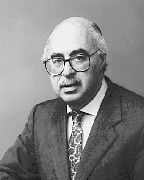The abiding mantra of business income coverage is that the policy is designed to do for the business what the business would have done if there had been no loss. In other words, the business income policy is written in the subjunctive tense - contrary to fact. With this perspective in mind, one learned commentator, Richard Lewis, remarked in his treatise Business Income Insurance Disputes, "...historically, most courts in Business Income cases did not impose an extraordinary burden of proof upon the policyholder, did not require claims to be proved with mathematical precision, and did not require that the policyholder prove its losses through any particular type of evidence."
Even with this clear outline of the coverage provisions, how come it is so difficult to settle business income losses? The reason is, of course, that business income claims are estimates of the future as is the insurance company's inevitable response to those estimates. So, everyone sees things in terms of their own self-interest.
Take, for instance, the period of time during which the policy responds to the interruption. Basically, the policy responds during the time it takes to restore the company's destroyed or damaged physical assets. However, when there is a time lag between the performance of the service and payment, insureds, in a couple of cases, have argued for damages that would be incurred after the period of restoration.
This was so in High Country Arts and Craft Guild v. Hartford Fire Insurance Company, 126 F.3d 629 (4th Cir. 1997) where the policy covered for actual loss of business income sustained "due to" necessary suspension of operations during 60-day period of restoration, and which provided that insurer would only pay for loss occurring within 12 consecutive months after date of loss. High Country Arts and Crafts Guild was a non-profit corporation engaged in promoting and sponsoring arts and crafts events. It lost its computer database containing fund-raising and donor information in a fire at its offices.
The insurance company maintained that its losses were confined to the 60-day period following the fire while the policyholder asserted that the policy ran to those losses incurred during the 12 month period following the fire. The Federal Court of Appeals held that the Hartford Fire Insurance Company was responsible for losses caused by the close of High Country's business during a 60-day period whether or not those losses showed during the 60-day period so long as they occurred within 12 months.
Most business income policies do not have such a constrained time period as 60 days but, generally, cover for at least 12 months. What this case stands for, however, is the fact that losses occurring during the 12 month period are compensable despite the fact that they fall outside the 60-day period as long as they are causally connected to the 60-day period.
These types of issues - appropriate meters for measuring the loss -frequently arise in catastrophe scenarios. Such was the case in E. Eric Guirard & Assocs. v. America First Insurance Co., 2010 U.S.Dist. LEXIS 42208 (E.D. La.Apr. 29, 2010) which involved a law firm engaged exclusively in work on contingency cases. The law office was damaged by Hurricane Katrina and could not operate for five months. The policyholder argued that because it represented clients on a contingency basis, only once a recovery is made is an attorney charged and expenses reimbursed so the revenue for the attorney's work will not appear on the firm's books until well after the work is completed.
The court held that there were two types of revenue streams: 1. Cases that had previously been signed up and would have been resolved generating immediate fees; and 2. New cases that would have been signed up generating future fees and the policyholder could recover for both of these streams of income.
These cases affirm the prevalent tenor of court decisions that impose a practical burden of proof on a policyholder and measure the loss in a way that tracks with the policyholder's normal operations. In any event, the burden of proof should be compatible with the burden in other civil cases. See Herbert A. Sullivan, Inc. v. Utica Mutual Insurance Company, 439 Mass. 387, 414; 788 N.E.2d 522, 544 (2003) (Lost profits are notoriously difficult to prove with precision.)
Marvin Milton, SPPA, is the senior vice president at Swerling Milton Winnick, Public Insurance Adjusters, Inc. Wellesley Hills, Mass.
Tags:
How long does the meter run? In reference to appropriate meters for measuring loss
February 23, 2012 - Front Section









